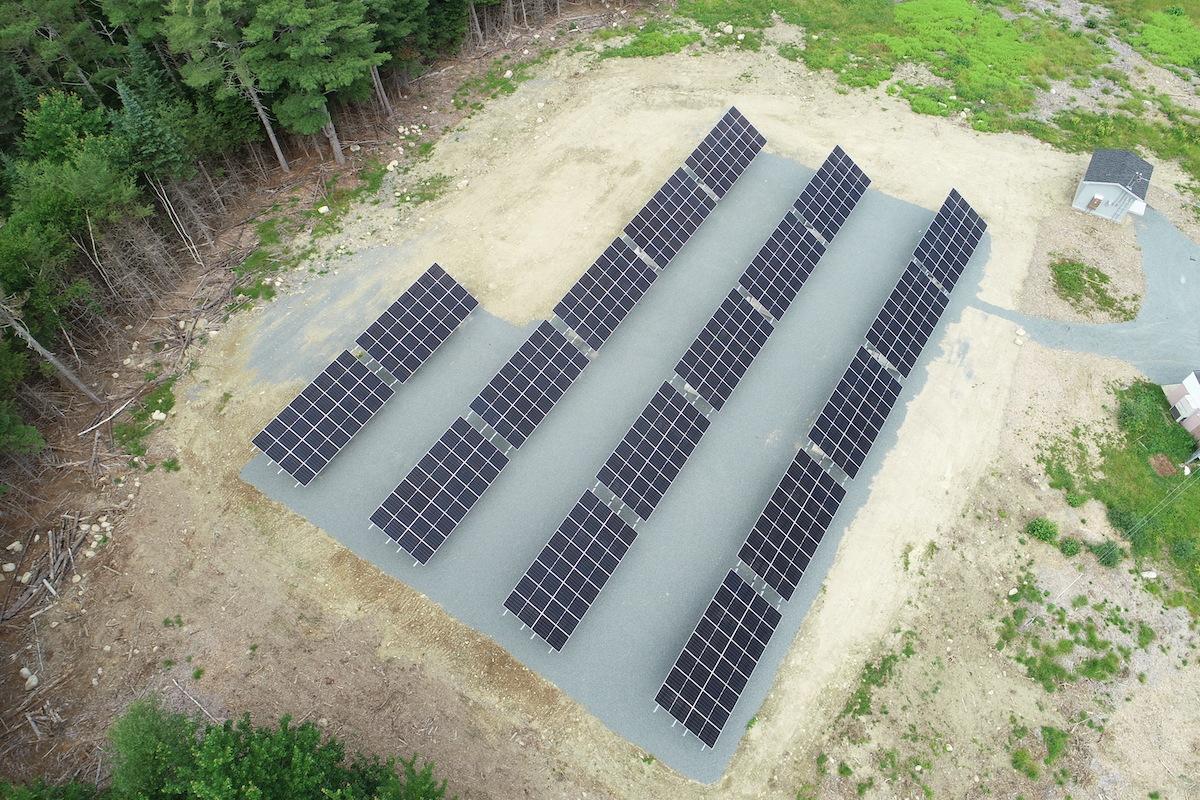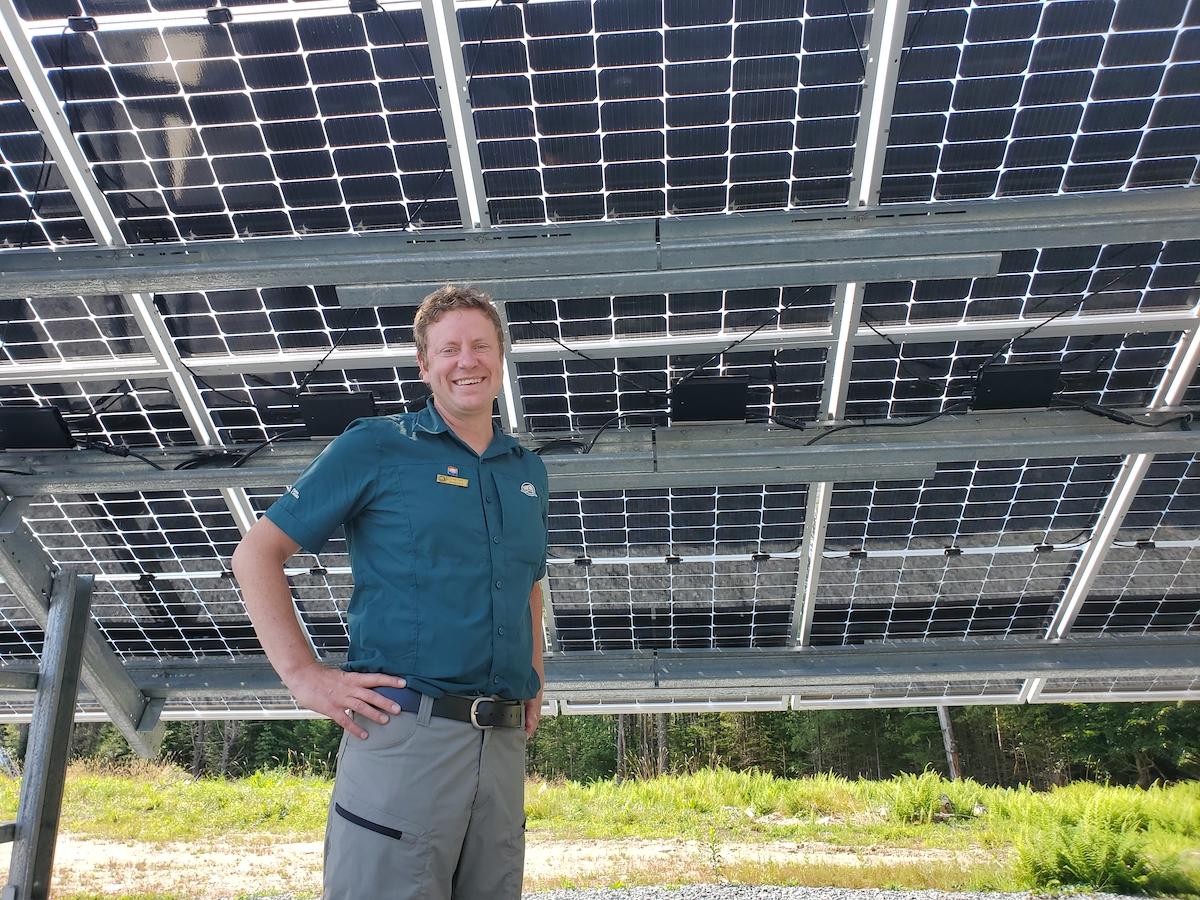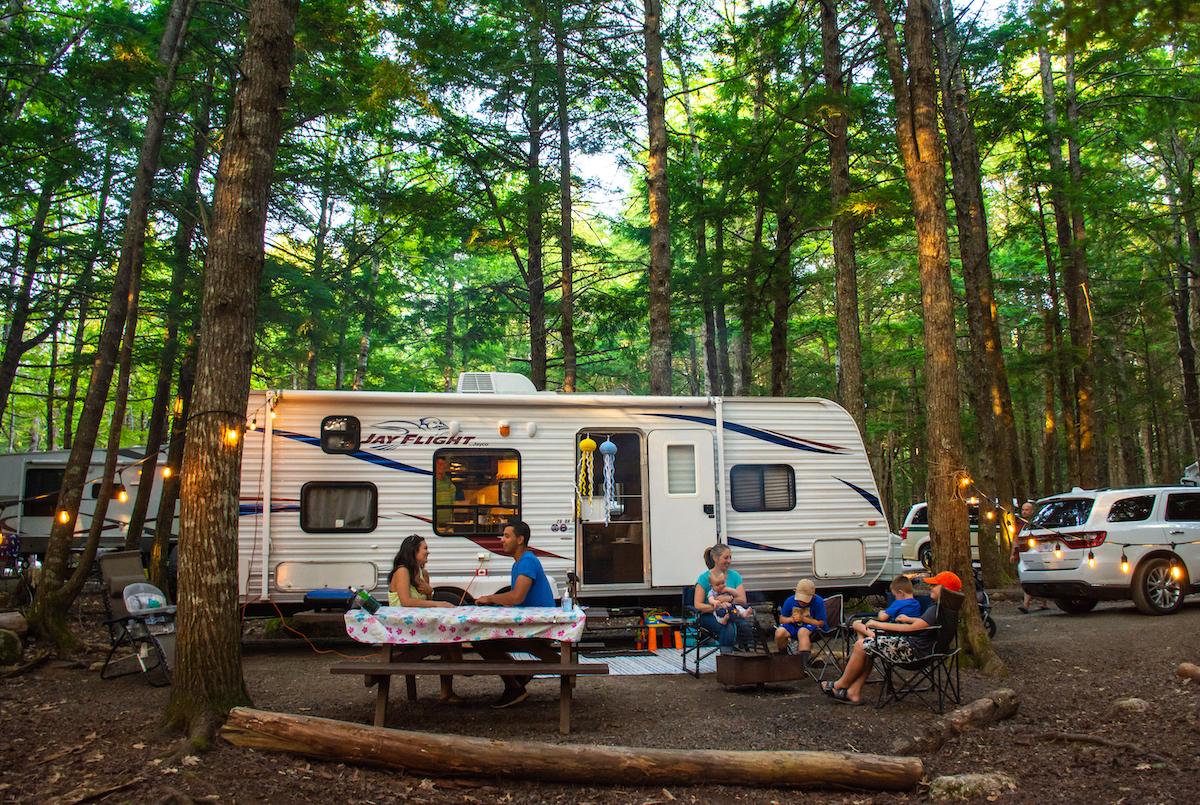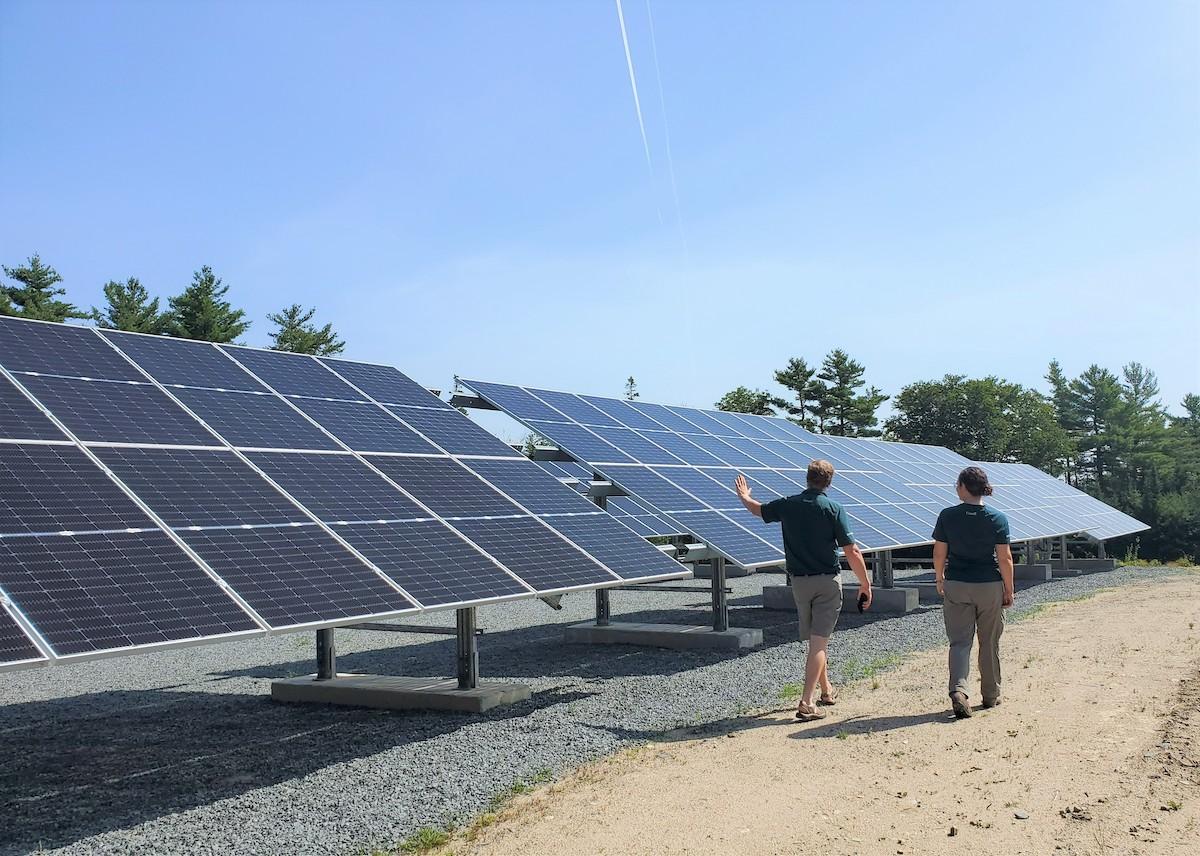
Thanks to these 272 solar panels, Kejimkujik National Park and National Historic Site now has Parks Canada's first net-zero campground/Parks Canada
Kejimkujik National Park and National Historic Site now has Parks Canada’s first net-zero campground.
The Nova Scotia park’s new grid-tied, photovoltaic solar array with 272 solar panels is generating enough solar electricity to offset all the electricity used in Jeremy’s Bay Campground.
“Annually that’s about 96 tonnes of C02 being removed from the atmosphere,” says superintendent Jonathan Sheppard. “This solar array will last a minimum of 35 years and so over the lifespan, it’s going to be somewhere in the neighbourhood of 3,400 tonnes of CO2 out of the atmosphere — about the same as taking 1,040 cars off the road.”
The project happened thanks to a 2021 federal investment of $589,400 ($455,000 USD) from the Greening Government Fund to support greenhouse gas emissions reduction efforts and clean technology at Keji.

Kejimkujik superintendent Jonathan Sheppard shows off the park's new solar array/Parks Canada
Jeremy’s Bay has 360 camping sites plus four types of roofed accommodations, including oTENTiks, Ôasis, rustic cabins and yurts. As Sheppard notes, “when all of that is filled it’s really like a small town with 1,500 to 2,000 people using it.”
On top of the electricity that campers may use at their sites, Keji provides 10 modern and inclusive washroom and shower facilities, 16 septic lift stations, wastewater treatment facilities and a water treatment plant that provides potable water. It also has kiosks and service buildings to support the campground.
“In our busy season, it takes 12,000 kilowatts a month to run that scale of infrastructure,” says Sheppard. “What we have been seeing in June and July, is that we are making 16,000 kilowatts a month, so we’re actually producing more than we designed for.”

A lot of electricity is consumed at park campsites/Parks Canada
Parks Canada staff spent six months ensuring it picked the right site and the right technology for the solar array. Then it tendered a design build contract that came in on time and on budget this spring.
The power that’s produced isn’t stored. Instead, it’s transferred back to the Nova Scotia Power grid “so we’re working in an offset system,” explains Sheppard.
He estimates that Kejimkujik will save $22,000 to $30,000 ($17,000 to $25,000 USD) a year on its electricity bill, depending on the fluctuating price of electricity. “The ROI (return on investment) is high because it will pay itself off in the first 20 years of a project that’s going to last 35-plus years,” notes Sheppard.
Kejimkujik — pronounced kedge-i-mmm-coo-jik and known locally as Keji — is the only place in the Parks Canada portfolio that has a full dual designation as a national park and a national historic site. The only inland national park in Atlantic Canada protects a cultural landscape that celebrates the long presence of the Mi’kmaq and their seasonal camps, burial grounds, fish weirs, hunting territories, canoe routes, portages, trails and rock carvings.

Parks Canada hopes to eventually allow guided visits to Kejimkujik's solar array/Parks Canada
The solar array isn’t visible to visitors and is tucked away near office buildings across from the park entrance. Sheppard says three factors came into play. It had to be placed near the main electric grid. It needed to be in a large, open area not shaded by trees, and so the site of an old Environment Canada weather station on top of a hill was perfect and meant no additional land had to be cleared. (The site is 40 meters by 60 meters, or 130 feet by 200 feet.) And Parks Canada collaborated with Mi’kmaq partners to ensure the construction didn’t create any issues with cultural resources.
“We chose a location that was not immediately part of the viewscape of people visiting Kejimkujik,” says Sheppard.
National parks are uniquely positioned to demonstrate environmental leadership, says Sheppard, but their infrastructure also creates “a fairly large greenhouse gas footprint.” Parks Canada is transitioning to a fleet of electric vehicles and high-efficiency buildings. But visitors usually come wanting to learn about the parks and are keenly interested in sustainable tourism and “the ethical dimension of the places they visit and the places they love.”
Right now, the solar array is still new and off-limits to visitors but Parks Canada hopes to eventually offer guided access. “We actually anticipate there’s going to be a fair bit of interest in it,” says Sheppard. “Visually it’s very striking and in some ways, it’s a view to the future so it’s an important part of that story.”



Comments
How ugly can you get? And people complain about the intrusivness of a cell tower disguised as a tree.
Manufacturing and installing 272 solar panels is definitely not a "net zero" activity.
My god, why do we abuse language like that?
Good thing that doesn't matter, because, "the solar array isn't visible to visitors and is tucked away near office buildings across from the park entrance".
Sorry you missed the point of the article - manufacturing and installing 272 solar panels is definitely not a "net zero" activity. For clarity, no one said that, just you.
It's now operating a "net-zero" campground. Meaning that, going forward, the installed solar panels will provide all the electricity (and then some) needed by the 2000 people using the campground.
My gosh. why do you insert language like that when the article never said that?
Postess - We are just supposed to ignore the activity that built this "net zero" campground? BTW, it's interest to note they would have a higher return buying BCE (Bell Canada) stock and it wouldn't likely be a depreciating asset.
I never asserted that the article mentioned any such thing. The REAL POINT, is that the article left out the real costs of manufacturing and installing solar panels. "Net zero", as used in this article and by you, is an abuse of language because it ignores the very significant environmental costs of solar panels. "Net zero" is a disingenuous attempt to start the carbon-counting clock at 11:00 p.m.
"Good thing that doesn't matter, because, "the solar array isn't visible to visitors and is tucked away near office buildings across from the park entrance".
We cannot see CO2 either, but obviously, it's a significant issue. Hiding these solar panels doesn't reduce the significance of the ugly pollution that they have produced.
ALL of my electrical power is net-zero too, because once it leaves the coal-fired power plant, there's no further CO2 production.
Just be sure to begin the CO2 count at a convenient point.